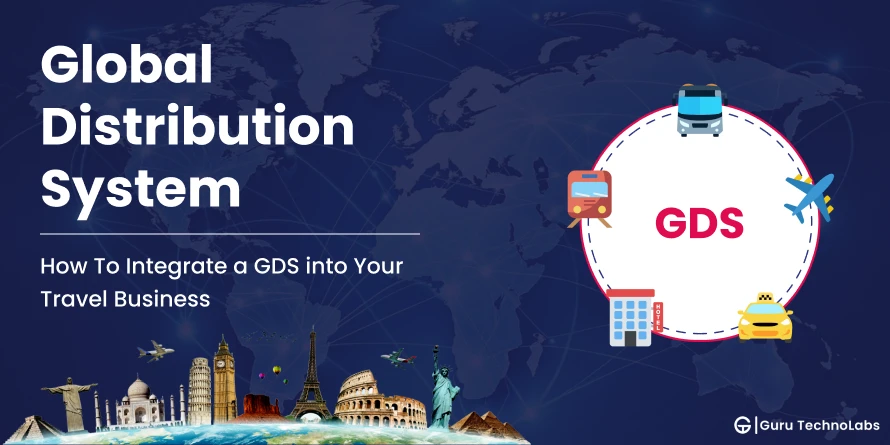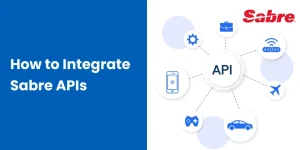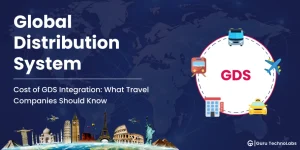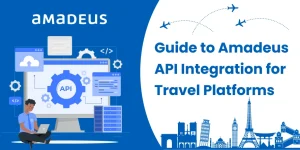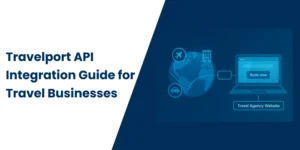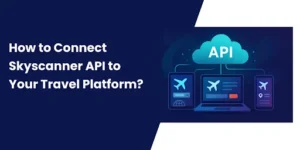In an industry where speed, connectivity, and global reach define success, integrating a Global Distribution System (GDS) into your travel business can be a game-changer. GDS technology acts as a powerful bridge, instantly linking travel agencies with airlines, hotels, and car rentals and streamlining the booking process for agents and travelers.
The benefits of using GDS in the travel industry are clear: broader distribution, increased revenue opportunities, and the ability to serve clients with up-to-the-minute information and competitive pricing.
But the impact goes beyond just numbers. Embracing GDS integration is not just about keeping up with technology but positioning your business at the heart of a dynamic, ever-evolving global travel marketplace. Want to reap benefits for your agency? Let’s explore how to make GDS integration a seamless part of your growth strategy.
Steps to Successfully Integrate a GDS into Your Travel Business
Curious about how to make your travel business future-ready with a GDS? Let’s dive into the step-by-step process that ensures seamless integration, robust performance, and a real competitive edge.
From technical groundwork to ongoing optimization, each phase is important for harnessing the full potential of digital transformation in the travel sector. Here are the steps to perform:
Assessing Your Business Needs & Readiness for GDS Integration
Begin by evaluating your current operations and defining what you want to achieve with this GDS integration. Consider your target markets, booking volumes, and whether you need access to multiple types of GDS (like Amadeus, Sabre, or Travelport).
This is also the stage to assess if your team is prepared for the shift and whether your infrastructure can support advanced solutions such as Flight API travel integration or CRM integration.
Fulfilling Technical and Regulatory Prerequisites
Before any technical work starts, ensure you meet all industry requirements, such as IATA or ARC accreditation, and have secure payment gateways in place for transactions.
You’ll need to verify that your property management or travel booking systems are compatible with the chosen GDS and that your business complies with data protection and payment security standards.
Choosing the Right Integration Approach
Choose an integration method that aligns with your technical capabilities and business goals. Options include direct travel API integration for maximum flexibility, using hotel solutions for quicker deployment, or leveraging middleware to bridge legacy systems.
Evaluate the best travel APIs on the market, considering scalability, support, and the ability to customize features to your workflow.
Implementing the GDS Integration
This phase involves connecting your systems to the GDS-typically through standardized interfaces like OTA XML-and configuring settings for seamless data exchange. Implementing a middleware layer can help translate, validate, and cache data, ensuring high performance and reliability.
At this stage, close collaboration with your GDS provider and technical team is essential for a smooth setup and troubleshooting.
Testing and Quality Assurance
Rigorous integration testing is critical to confirm that all modules work together as intended. Employ both automated and manual tests to validate real-time inventory updates, booking flows, and payment processing.
Adopt best practices such as regression, negative, and interface testing, and consider strategies like top-down or hybrid approaches to cover all scenarios and minimize post-launch issues.
Optimizing for Business Growth
Once live, leverage analytics and advanced GDS features to identify new revenue streams, improve upselling, and refine your offerings. Integrate with additional platforms or channels as needed, and use the data to personalize services for different customer segments. This is where digital transformation in the travel sector truly accelerates your business.
Ongoing Support and Maintenance
GDS integration isn’t a set-it-and-forget-it process, it requires continuous attention. Regular API updates, system patches, and compliance checks must be part of your maintenance schedule. Additionally, stay in close contact with your GDS provider for any service changes or upcoming feature releases.
Training your team periodically ensures they stay up to speed with system capabilities and workflows. Long-term success depends heavily on consistent monitoring, which is why proactive support is just as vital as the integration itself.
Conclusion
Based on the steps outlined above, it’s clear that integrating a GDS into your travel business isn’t just about managing, it’s a strategic move that can elevate your operations and bring some serious growth potential. With the right planning, technical setup, and ongoing support, GDS integration becomes less of a challenge and more of an opportunity to future-proof your business in a digitally driven market.
However, if all this sounds a bit overwhelming or you’re unsure where to start, you’re not alone and you don’t have to navigate it on your own. With our GDS Integrate Service, we help travel businesses with the full technical setup, from choosing the best GDS systems to seamless API integration and post-launch support.
Contact us today and let’s build a smarter, more connected travel platform together.
Frequently Asked Questions
The integration time can vary depending on your technical setup and chosen GDS, but typically it takes between 3-6 weeks for a full integration, including testing and configuration.
While having technical support helps, many GDS providers or third-party experts (like Guru TechnoLabs) offer end-to-end assistance. So, even if you are not tech-savvy, you can still get integrated with minimal hassle.
Yes. GDS levels the playing field by giving smaller agencies access to global inventories, real-time pricing, and automation tools, just like larger competitors.
Direct integration connects you straight to the GDS, giving more control but requiring more technical effort. Aggregators offer a simple setup by bundling multiple travel APIs, ideal if you want quicker, less complex access to content.
